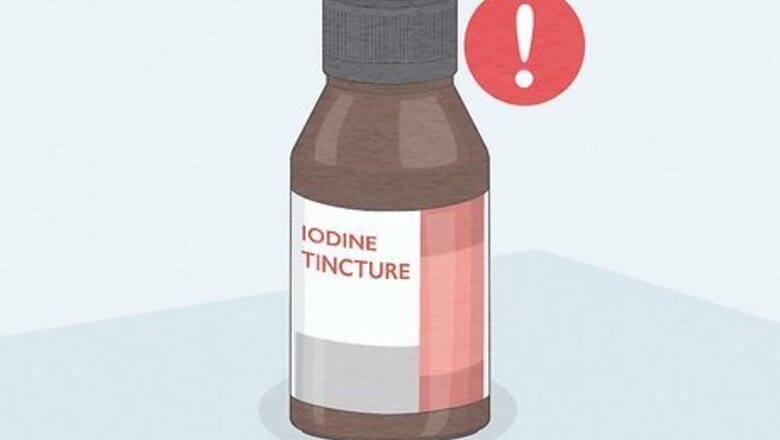
views
Examining the Mole
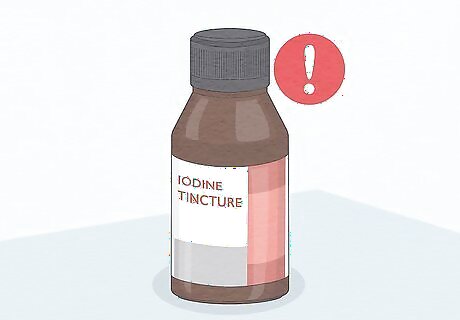
Proceed with caution. Even though iodine mole removal is a popular home remedy, it's currently an unverified one. There is not enough medical evidence to prove or disprove its effectiveness. On the other hand, there's no evidence suggesting that the practice is dangerous, either, and using iodine is safer than attempting to shave off the mole at home. You should never try shaving off a mole, even if you know it isn't cancerous. If you know the mole isn't dangerous and you only want to remove it for cosmetic or comfort reasons, the iodine treatment might be worth trying. You should still exercise caution when applying this treatment, though, by watching for symptoms of a negative reaction.
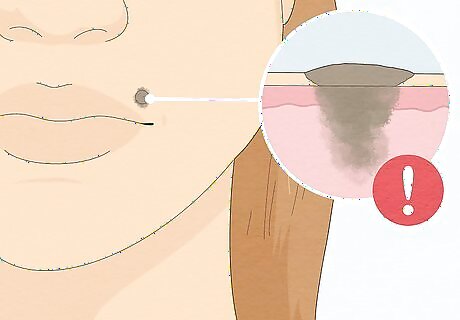
Identify a possible threat. Some moles may contain cancer cells, in which case, self-removal with iodine or any other home remedy should be avoided since it could cause those cells to spread further into the body. If you have any reason to suspect that a mole might be symptomatic of skin cancer, you should immediately schedule an appointment with a dermatologist. Apply the "ABCDE" self-examination guide when examining the mole to evaluate its potential threat level. "A" refers to "asymmetrical shape." Cancerous moles typically have unevenly shaped halves. "B" refers to "border." Moles that have notched, scalloped, or other uneven borders are more likely to contain cancer cells. "C" refers to "color." Consistently colored moles are often benign, but those made up of many colors or those that change color might be dangerous. "D" refers to "diameter." Harmless moles are almost always smaller than 1/4 inch (6 mm) in diameter. Moles larger than that could be cancerous. "E" refers to "evolving." Moles that change in appearance over several weeks or months could contain cancer cells.
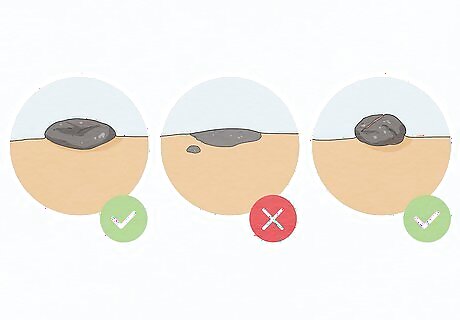
Determine if iodine may help. Even among non-cancerous moles, there are some moles that may not respond to an iodine treatment. The iodine remedy seems most effective for deep brown moles that are slightly raised. The iodine is believed to break down some of the excess skin cells building in that area, causing an elevated mole to eventually fall off. Small, flat moles that resemble freckles are less likely to react to iodine. Note that iodine may also be more effective on moles that were accidentally cut or scraped open since it also helps prevent bacterial infections from developing in minor wounds.
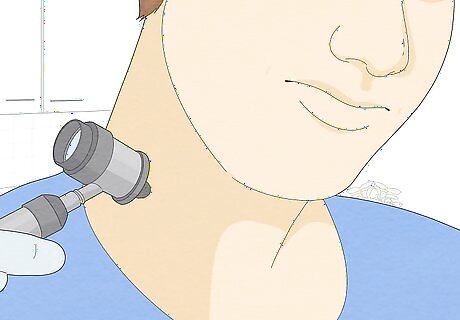
Consult a dermatologist. It's always a good idea to talk to a dermatologist about any mole before you attempt home treatment. This is true regardless of whether or not the mole appears cancerous. Your dermatologist can more accurately determine whether or not the mole is a threat. Additionally, your dermatologist can review other options for mole removal that may prove more effective. He or she should also be more familiar with your personal medical history, so if the iodine treatment does present any threat to you specifically, your dermatologist should be able to let you know.
Applying Iodine
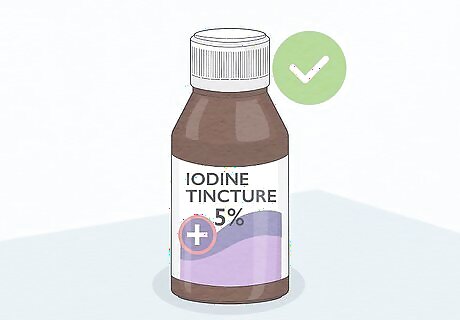
Choose the right type of iodine. Purchase a topical iodine product containing only 5 percent iodine. Stronger concentrations may cause irritation, especially if you have sensitive skin. Topical iodine should be available over-the-counter at most drug stores. You can usually find topical iodine in swab, ointment, tincture, dressing, or gel form. Any of these forms will work, but you should note that specific application instructions may vary depending on type. Check the product label for more precise dosage details before use.
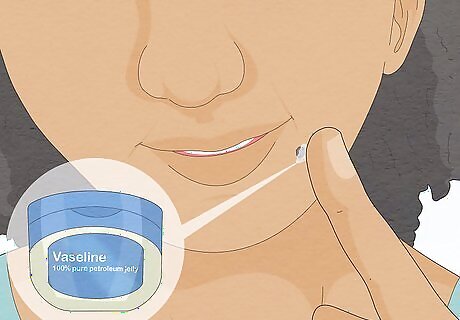
Surround the mole with petroleum jelly. Use your fingers or a cotton swab to apply a thin layer of petroleum jelly to the skin directly around the mole. Get the petroleum jelly as close to the mole as possible without actually touching it. Iodine will stain the skin a deep purple color. Furthermore, it may spread out slightly from the initial site of application, creating an even larger stain than anticipated. Coating the surrounding skin with petroleum jelly prevents the iodine from dripping or spreading out and staining that area.
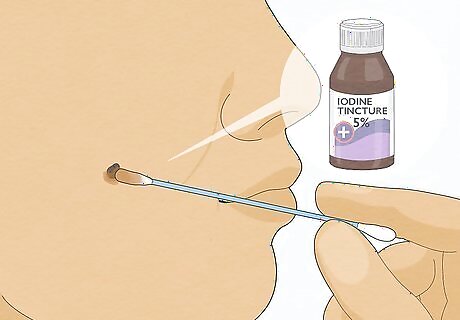
Apply the iodine using a cotton swab. Soak the tip of a cotton swab with a small amount of topical iodine solution, then rub the iodine-soaked cotton directly over the mole. For iodine gels, creams, and other non-liquids, apply a small dot of iodine to the tip of the cotton swab and transfer it directly to the mole. Use the cotton swab to rub the iodine solution into the mole until the mole absorbs it. A small amount is usually sufficient, and you should never use more than needed to cover the mole itself. Check the label instructions for more detailed instructions concerning proper dosage.
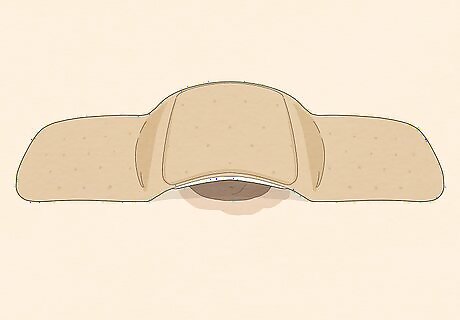
Loosely cover the mole. Place an adhesive bandage over the mole, centering the non-adhesive pad over the mole itself. Do not apply any adhesive directly to the mole. If desired, you can apply two bandages in a cross-cross manner to cover the area more effectively. Keep both bandages loose, though. Do not apply bandages or other coverings too tightly since doing so could increase the risk of experiencing irritation or iodine burn. The bandage is only meant to prevent the iodine from rubbing off and staining other surfaces.
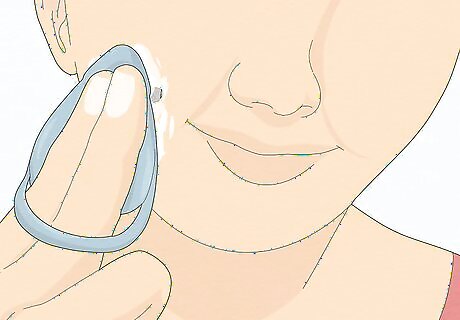
Clean the area. Allow the iodine to soak into the mole overnight, or for 8 to 12 hours. Afterward, gently cleanse the area using a facial cleansing pad or mild soap. Try to avoid scrubbing the mole too harshly since doing so may cause injury or pain. Wipe the area gently to strip away any excess iodine and dead, loosened skin cells. Pat the area dry with a clean paper towel when done. Note that there may still be an iodine stain even after you wash the area. That stain will likely remain until well after the treatment ends.
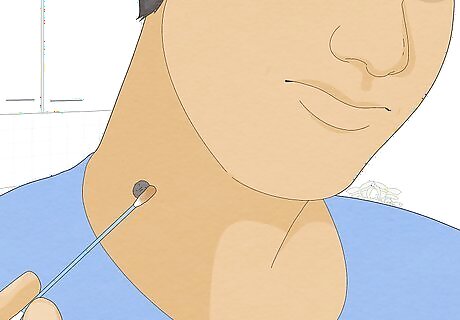
Repeat daily. Iodine won't remove the mole overnight. You'll need to repeat the treatment for seven to ten days before the mole fades or disappears. Prolonged use of topical iodine can be dangerous, so you should not use it for more than ten days, even if the mole hasn't completely vanished yet. Follow the same steps when applying each dose of topical iodine. Only apply the iodine once a day, and try to apply it to the mole at the same time each day.
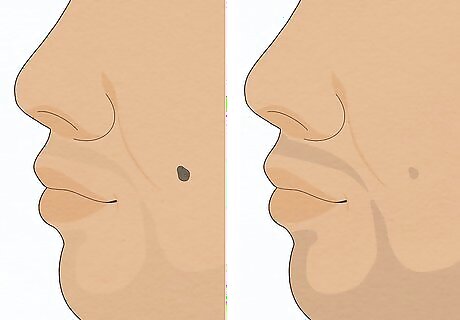
Watch for changes. The mole should eventually shrivel up and break free from your skin. This process will happen gradually, however, so you should monitor the area and watch for changes each day. You may not notice any change after the first day or two, but by the fourth day, you should see some change in size or color. If there is no visible change after seven days, the treatment isn't working effectively and probably won't be enough to remove your mole.
Avoiding Potential Mishaps
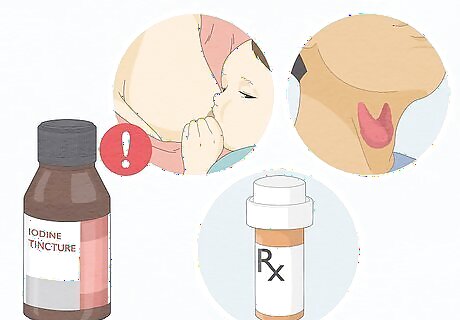
Take note of a few special precautions. Even though iodine is safe for most adults and children over the age of 14, you should avoid it if you have certain medical conditions or if you're currently taking certain medications. Do not use iodine if you're pregnant or breast-feeding. Iodine can also be unsafe if you have a specific type of rash called "dermatitis herpetiformis," or if you have an autoimmune thyroid disease or other thyroid disorder. These conditions may all worsen with the use of topical iodine. You should also avoid iodine if you are on an antithyroid drug, amiodarone, lithium, ACE inhibitor, ARB drug, or water pill. Similarly, avoid using topical iodine if you're already taking an oral iodine supplement to avoid an accidental overdose.
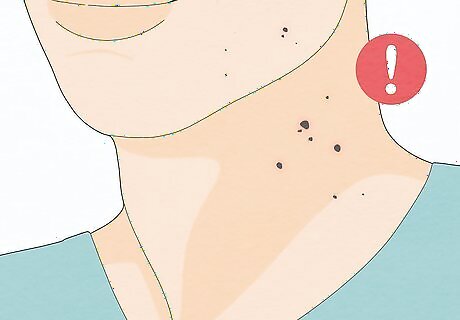
Stop at the first sign of irritation. Under some circumstances, iodine can cause skin irritation and other unpleasant side effects when applied to the skin. If you experience any negative side effects when using topical iodine, you should stop the treatment immediately. People with sensitive skin may experience skin irritation or develop rashes and hives. If you have an iodine allergy, you may experience nausea, headache, swelling, difficulty breathing, hives, or other moderate to severe symptoms.
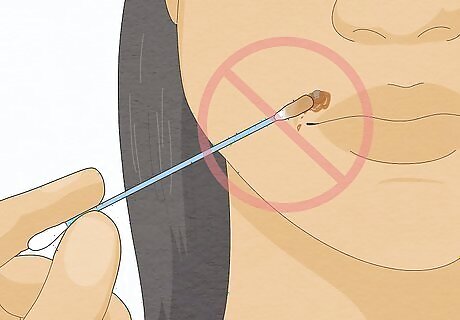
Avoid overuse. Never use more iodine than recommended, and avoid using it for prolonged periods. Doing so could have an adverse effect on your health. Iodine can be toxic when too much gets into your body. You should also take steps to prevent accidental overdose by avoiding supplements that contain iodine while using topical iodine.
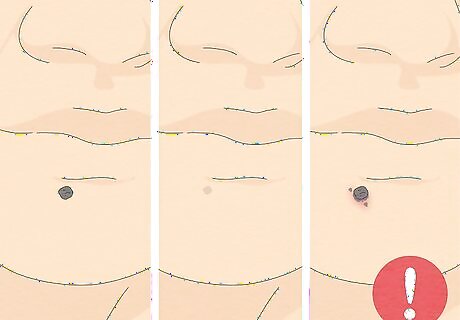
Watch the area after completing the treatment. After successfully removing the mole using iodine, you should continue to watch the area. The mole should not grow back. If the mole does grow back, it could be a sign of melanoma skin cancer. You should immediately schedule an appointment with your dermatologist for further examination. Even if you don't completely remove the mole, you should continue to watch the area. If the mole suddenly changes shape, color, or size, it could contain cancer cells. Schedule a consultation appointment with your dermatologist if this occurs.



















Comments
0 comment